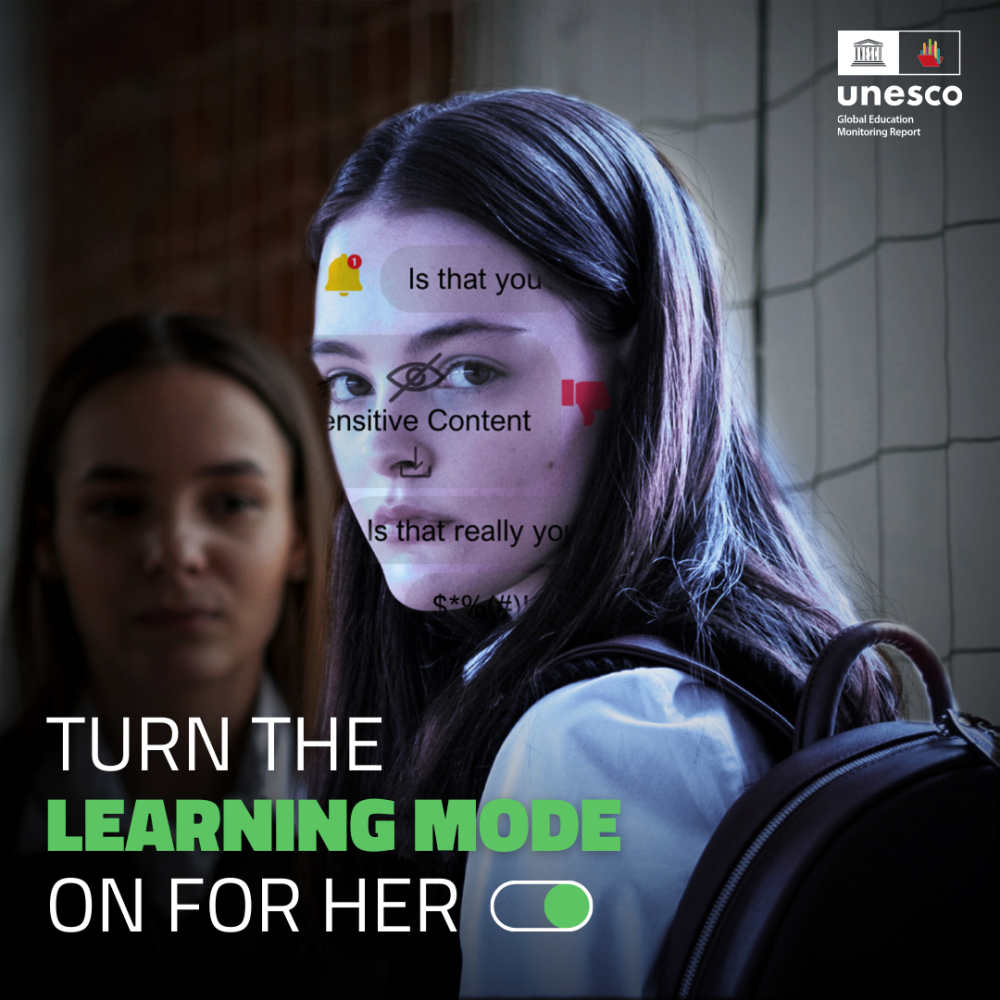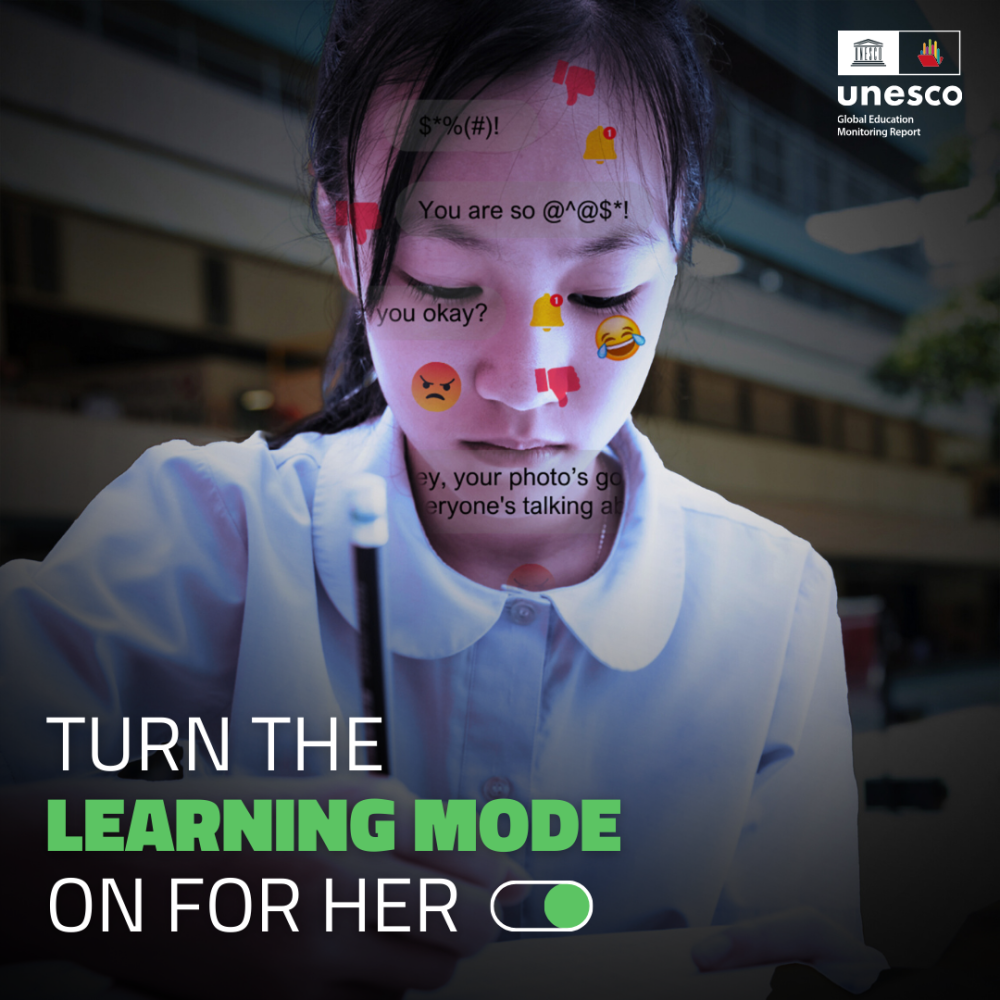Girls suffer more cyberbullying than boys
Girls often spend more time on social media than boys
FB research found that 32% of teenage girls said that when they felt bad about their bodies, Instagram made them feel worse.

AMN / WEB DESK
A new report released by UNESCO has warned that exposure to algorithm-driven, image-based content can expose girls to inappropriate material, ranging from sexual content to videos that glorify unhealthy behaviours or unrealistic body standards. This exposure can have particularly detrimental effects on girls’ self-esteem and body image and affect their ability to learn.
The report entitled Technology on her terms, says While digital technology has the potential to improve access to education content and enhance the learning experience, children’s social lives increasingly play out on social media and this trend is taking its toll on concentration and well-being in schools. Girls often spend more time on social media than boys. In the United Kingdom, by age 15, 43% of girls spend one to three hours daily on social media compared to 31% of boys. Girls that interact on social media for an hour or more on a school day are found to have lower levels of well-being than those who interacted less. Among boys, meanwhile, there were no cross-associations between well-being and their social media usage.
Girls’ mental health under strain
According to the 2021/22 Health Behaviour in School-aged Children study of the World Health Organization in Europe, girls’ well–being and mental health are under more strain than boys. Adolescent girls are twice as likely to report feeling lonely as boys and to suffer an eating disorder in their lives, something that social media exacerbates. A review of young people aged 10 to 24 years in 17 countries highlighted the association between the use of social media and body image concerns, eating disorders and poor mental health. Facebook-using pre-teenage girls, female secondary school students and female university students reported more body-related image concerns than non-users. Facebook’s own research found that 32% of teenage girls said that when they felt bad about their bodies, Instagram made them feel worse.
The report highlights the addictive design of TikTok, characterized by short, engaging videos, which can lead to excessive screen time, distracting students from academic responsibilities and extracurricular activities. However, the platform is frequently used for educational purposes, particularly since the pandemic. In the United States, 1 in 4 TikTok users used it for educational purposes in 2022. The platform’s instant gratification model may also affect attention spans and learning habits, making sustained concentration on educational tasks more challenging. For girls, who often face societal pressures to excel academically while also navigating social dynamics online, this can add additional layers of stress and distraction making it particularly inappropriate.
Girls suffer more cyberbullying than boys
Cyberbullying is made easier with the spread of technology. On average, across OECD countries with available data, 12% of 15-year-old girls reported having been cyberbullied, compared to 8% of boys.

This calls for ethical considerations in the way that platforms are designed. Social media cannot be allowed to extend gender norms and practices in school corridors, which impact on children’s well-being and ability to learn.
Education also needs to be recognised for the role that it can play in influencing technological development. Social media platforms shape and are shaped by existing social inequalities, with some algorithms magnifying negative gender norms and practices in schools. For that reason, education needs to be equitable and inclusive in order to develop the best talents of boys and girls. However, across the world, girls are still confronted with biased gender norms and stereotypes which ultimately hinder their academic success and impact their career choices. This not only puts strain on girls’ well-being and mental health, but also deters girls from pursuing careers in science, technology, engineering and mathematics (STEM). Girls’ confidence is knocked early, with far higher maths anxiety than boys, which has been found to account to at least a quarter of the total variation in mathematics performance across OECD countries in the 2023 PISA study.
This anxiety also contributes to the fact that women remain considerably less likely to choose STEM fields. According to new data from the UNESCO Institute for Statistics released in the Report, women make up only 35% of tertiary education STEM graduates around the world, a share that has not changed in the past 10 years. This ultimately results in a lack of women in the technology workforce. Women hold less than 25% of science, engineering, and ICT jobs.
These findings highlight the need to promote real-life role models in STEM to encourage career choice. The extent to which girls are encouraged and empowered to build on their mathematics skills to take them through to STEM studies and ultimately careers is key to ensuring that women participate on equal terms in the ongoing digital transformation and that technological design works for everyone in the future.
